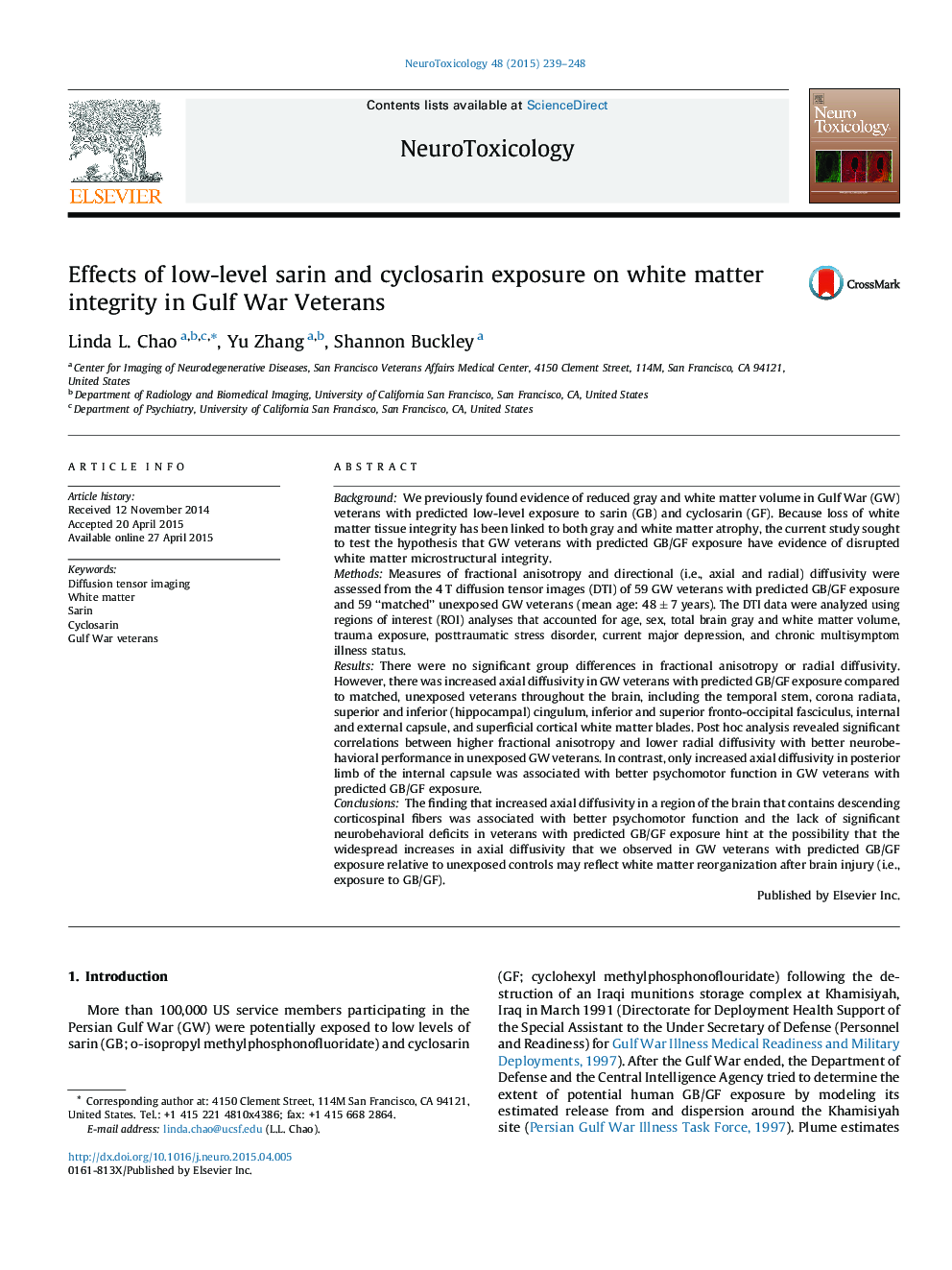| Article ID | Journal | Published Year | Pages | File Type |
|---|---|---|---|---|
| 2589537 | NeuroToxicology | 2015 | 10 Pages |
•We examined white matter (WM) integrity in GW veterans with and without GB/GF exposure.•Axial diffusivity was higher in the white matter of exposed than unexposed veterans.•FA and radial diffusivity correlated with neurobehavior in unexposed veterans.•Internal capsule axial diffusivity correlated with reaction time in exposed veterans.•Increased axial diffusivity may reflect WM reorganization after GB/GF exposure.
BackgroundWe previously found evidence of reduced gray and white matter volume in Gulf War (GW) veterans with predicted low-level exposure to sarin (GB) and cyclosarin (GF). Because loss of white matter tissue integrity has been linked to both gray and white matter atrophy, the current study sought to test the hypothesis that GW veterans with predicted GB/GF exposure have evidence of disrupted white matter microstructural integrity.MethodsMeasures of fractional anisotropy and directional (i.e., axial and radial) diffusivity were assessed from the 4 T diffusion tensor images (DTI) of 59 GW veterans with predicted GB/GF exposure and 59 “matched” unexposed GW veterans (mean age: 48 ± 7 years). The DTI data were analyzed using regions of interest (ROI) analyses that accounted for age, sex, total brain gray and white matter volume, trauma exposure, posttraumatic stress disorder, current major depression, and chronic multisymptom illness status.ResultsThere were no significant group differences in fractional anisotropy or radial diffusivity. However, there was increased axial diffusivity in GW veterans with predicted GB/GF exposure compared to matched, unexposed veterans throughout the brain, including the temporal stem, corona radiata, superior and inferior (hippocampal) cingulum, inferior and superior fronto-occipital fasciculus, internal and external capsule, and superficial cortical white matter blades. Post hoc analysis revealed significant correlations between higher fractional anisotropy and lower radial diffusivity with better neurobehavioral performance in unexposed GW veterans. In contrast, only increased axial diffusivity in posterior limb of the internal capsule was associated with better psychomotor function in GW veterans with predicted GB/GF exposure.ConclusionsThe finding that increased axial diffusivity in a region of the brain that contains descending corticospinal fibers was associated with better psychomotor function and the lack of significant neurobehavioral deficits in veterans with predicted GB/GF exposure hint at the possibility that the widespread increases in axial diffusivity that we observed in GW veterans with predicted GB/GF exposure relative to unexposed controls may reflect white matter reorganization after brain injury (i.e., exposure to GB/GF).
